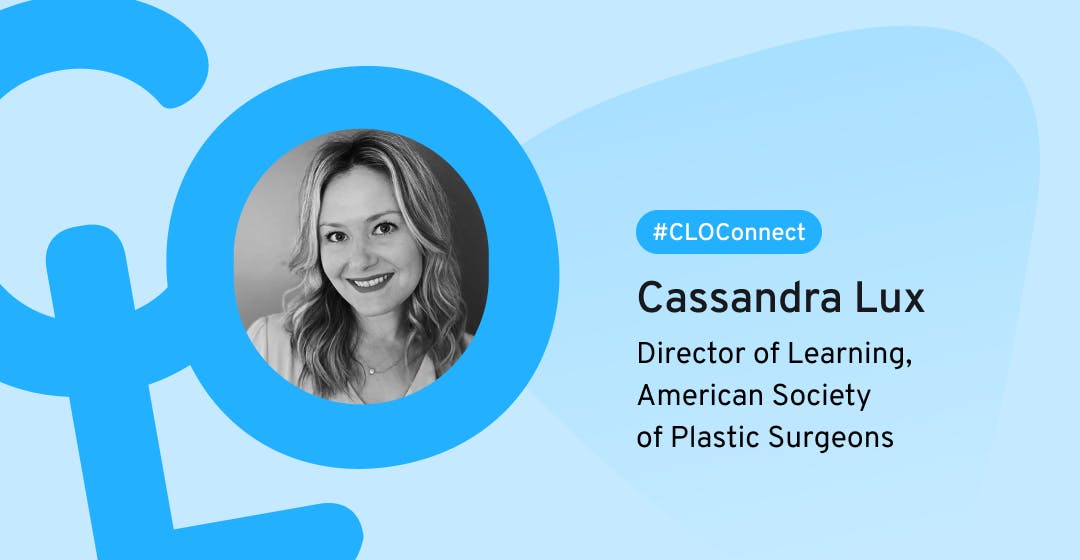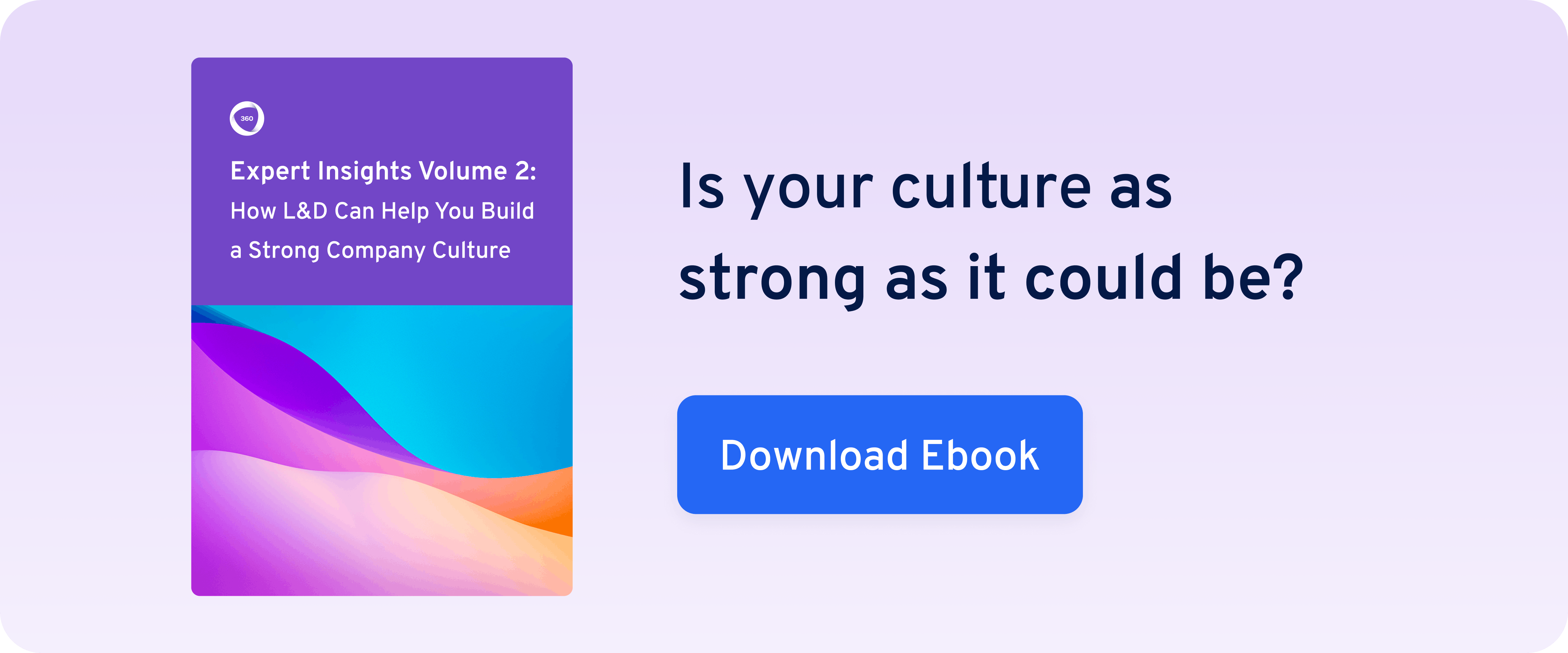
How the American Society of Plastic Surgeons Captures Internal Expertise Through Content Curation
Around the world, non-profit representative bodies play a key role in advocating for different industries and sectors, from technology and business through to sports and medicine. The American Society of Plastic Surgeons (ASPS) is a leading example of one such industry group.
One of the key functions for organizations like the ASPS is to develop education and training initiatives reflecting the collective knowledge and expertise of its members. But how exactly does this happen in practice? And what role does L&D have to play?
Recently, I sat down with Cassandra Lux, Director of Learning for the American Society of Plastic Surgeons, to find out how she curates learning resources. We talked about the ASPS’s enthusiastic members, and how she captures their depth of knowledge and expertise.
We started our discussion with a basic question: what is the ASPS?
What is the ASPS, and what does it do?
“The American Society of Plastic Surgeons (ASPS) is the largest plastic surgery medical specialty organization in the United States,” says Cassandra. “Our membership accounts for about 93% of all board-certified plastic surgeons in the United States, and we also have a sizable international membership. It fluctuates, but we have about 11,000+ members in total.”
“In addition, we work more widely within the specialty of plastic surgery, including with nurse practitioners, PAs, office staff, and insurance coders. We offer a lot of educational and training initiatives, and we advocate for enhanced public awareness of the value of plastic surgery.”
Alongside this educational role, the ASPS also focuses on innovation within the field of plastic surgery. “We also have the Plastic Surgery Foundation, which works alongside the ASPS. The PSF focuses primarily on research and innovation, and developing new ideas and techniques within the field. So, our scope is pretty wide-reaching.”
As Cassandra explains, this wide scope, together with the ASPS’s active membership, can create some unique L&D opportunities–and some big challenges.
Our membership accounts for about 93% of all board-certified plastic surgeons in the United States.
You can never have enough expert insights! Check out our ebook to find out How L&D Can Help You Build a Strong Company Culture
The L&D challenges of managing multiple communities
The ASPS consists of many active committees focusing on different areas within the field of plastic surgery, from patient safety and wellness through to leadership development.
“The number of our committees can be both a benefit and a challenge from a learning perspective,” says Cassandra. “It’s a sign of very active member engagement, which is definitely something you want to see in a medical specialty. We want our members to be not only engaged, but also driving a lot of our work programs, especially our innovation programs.”
“On the flip side, having multiple committees can create a natural silo effect. Each of these committees is responsible for different educational needs: they identify the need for new training and develop resources, but they don’t always talk to each other.”
Cassandra’s role is to harness the knowledge of committee members, share resources across the ASPS, and prioritize learning needs. “The challenge for us is: how do we take all of these priorities for different audiences and come up with a single strategic plan? And how do we select the right areas of focus to maximize and scale our learning across multiple channels?”
For Cassandra, meeting this challenge is all about content curation.
Related: GP Strategies’ 5 Techniques to Put Learners at the Heart of L&D Strategy
The challenge for us is: how do we take all of these priorities for different audiences and come up with a single strategic plan? And how do we select the right areas of focus to maximize and scale our learning across multiple channels?
How the ASPS curates content in response to complex learning needs
As Cassandra explains, the learning team works across the whole organization to propose creative, modern ideas on how to engage ASPS members with the right educational resources.
“Within the learning team, we oversee live programming (or virtual programming during 2020 and 2021), as well as online learning. This gives us a terrific opportunity to funnel collective knowledge through our team and make the right connections between our committees.”
“For example, one committee might be focused on certain practice management topics without being aware of what the other committees are working on. We have the opportunity to help them engage with other committees which already have educational programs in the works.”
For Cassandra, this involves one key skill: content curation. “Instead of always being content developers, we’re taking on much more of a curating role. Sure, we’re still creating learning content, but we’re focusing more on selecting the resources we already have, and on capturing and reflecting the range of expertise held within our organization.”
So, how does Cassandra leverage existing content across multiple channels?
Related: Decentralized Learning in Practice: How Visa Leverages User-Generated Content
Instead of always being content developers, we’re taking on much more of a curating role. Sure, we’re still creating learning content, but we’re focusing more on selecting the resources we already have, and on capturing and reflecting the range of expertise held within our organization.
Leveraging existing content across multiple channels
Cassandra gave me two great examples of how her team leverages member expertise across multiple channels: turning on-demand patient safety training into a podcast featuring guest speakers, and leveraging existing content into a series on leadership in plastic surgery.
Example #1: turning on-demand patient safety training into a podcast
“Our Patient Safety Committee was interested in running an educational program,” says Cassandra. “They wanted to engage an instructional designer to create an on-demand product. But, looking at the calendar for the year, it was going to be a challenge to fit that in. So, we had a conversation to find different solutions, and a different way to deliver the training.”
“Rather than running this as an on-demand training, we produced it as a podcast-style audio recording,” says Cassandra. “This meant we were able to engage members of that committee as our guest speakers and hosts. It was a unique product. It was low-tech and low-cost, which meant we could offer it to our membership as a free patient safety course.”
“Organically, the podcast really took off. Rather than run dedicated marketing for it, we cross-promoted it with other patient safety topics. This has really helped us to maximize the use of our existing resources, not just in the L&D team but in other teams, too.”
Example #2: leveraging content into a leadership series
“We also ran a really terrific series on leadership called ‘Enhance Your Practice’,” says Cassandra. “This is a public-facing podcast with a number of seasons covering different topic areas of practice management. Our Essentials of Leadership Committee wanted to offer some educational resources for emerging leaders within the society.”
“I saw this as another great opportunity to work together. Rather than launch a whole new project, we could incorporate the Committee’s areas of interest into our existing resources. We were already doing a podcast season on leadership, so it made sense to bundle it together.”
According to Cassandra, this quest for leveraging existing resources didn’t stop there. “We’ve had a bunch of other examples like this, with our Wellness Committee, and our Women in Plastic Surgery Committee. Now, we’re looking hard at the resources we have, and we’re finding strategic ways to communicate these resources to others.”
These examples offer a great illustration of Collaborative Learning in action. By leveraging the knowledge within different ASPS committees, Cassandra can offer innovative training based on subject-matter expertise. Gathering and sharing these learning resources doesn’t just help ASPS members to be better prepared: it also helps boost their engagement in learning.
Related: Why Collaborative Learning is the Next Phase of LMS eLearning
Organically, the podcast really took off. Rather than run dedicated marketing for it, we cross-promoted it with other patient safety topics. This has really helped us to maximize the use of our existing resources, not just in the L&D team but in other teams, too.
How leveraging in-house expertise boosts learner engagement
For Cassandra, her team’s strong focus on L&D curation and collaboration has really helped to build excitement and enthusiasm–especially during the difficulties associated with COVID-19.
“We’ve really had to improvise over the last year,” she says. “Like everyone else, we were flying the plane while it was being built, including taking live or on-demand programs and turning them into something else. We had to manage expectations, because people had to understand that the learning experiences were fundamentally different in a virtual environment.”
Fortunately for Cassandra and ASPS, this focus on curation and collaboration is helping to boost engagement. “When you’re able to produce and deliver a learning solution right away, the committee members see that. They see the level of responsiveness, and they see how we’re creating wins by sharing expertise and building momentum. It really helps build engagement.”
“For example, with our patient safety podcast, people were really excited to be a part of it. It’s a fun thing to do, and it’s a bit out-of-the-box in comparison with a lot of the traditional learning we see in medical organizations. It’s also a great way to share the knowledge our experts have.”
As Cassandra says, involving in-house experts doesn’t just create better learning outcomes; it also keeps experts engaged. “Our content experts are very excited to be involved. This helps the word to spread, which creates new opportunities for collaboration and cross-promotion.”
When you’re able to produce and deliver a learning solution right away, the committee members see that. They see the level of responsiveness, and they see how we’re creating wins by sharing expertise and building momentum. It really helps build engagement.
Thanks again to Cassandra for taking the time to share her insights!
While you’re here, check out my expert interview roundup featuring six skills that make a great Chief Learning Officer, as well as my interview with Rachel Peck of Harry’s Inc. about decentralizing L&D with self-directed Collaborative Learning.
Want more peer insights on transforming workplace learning? Check out #CLOConnect, our interview series with top L&D leaders on driving growth and scaling culture through Collaborative Learning. Or you can subscribe (below 👇) to our weekly newsletter to receive our latest posts directly in your inbox.


